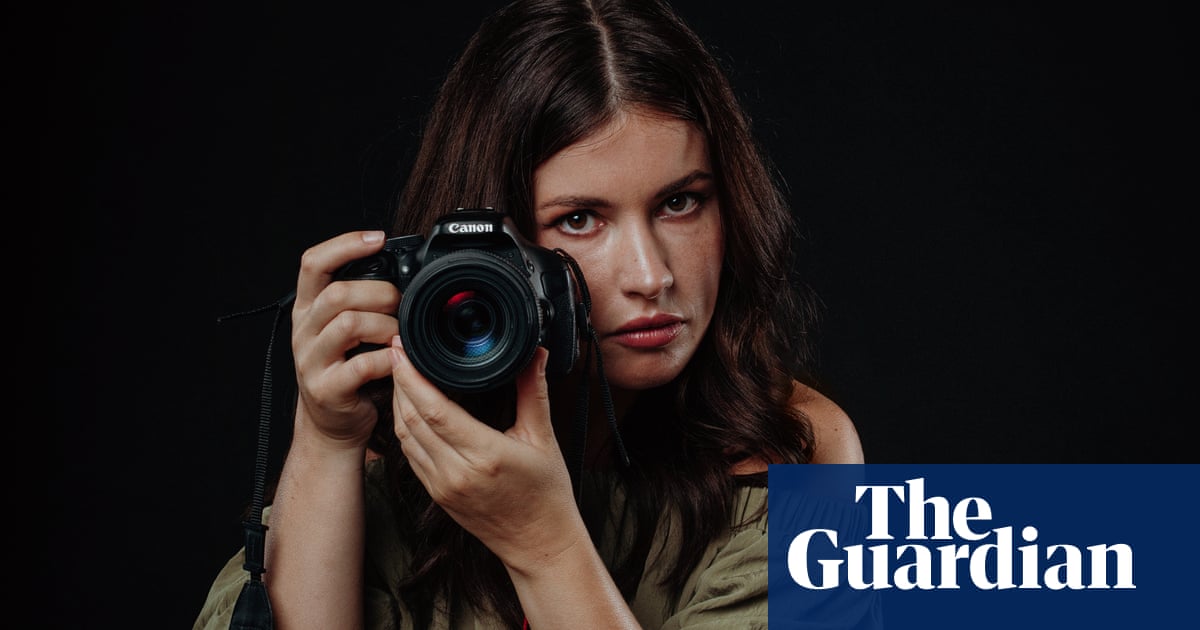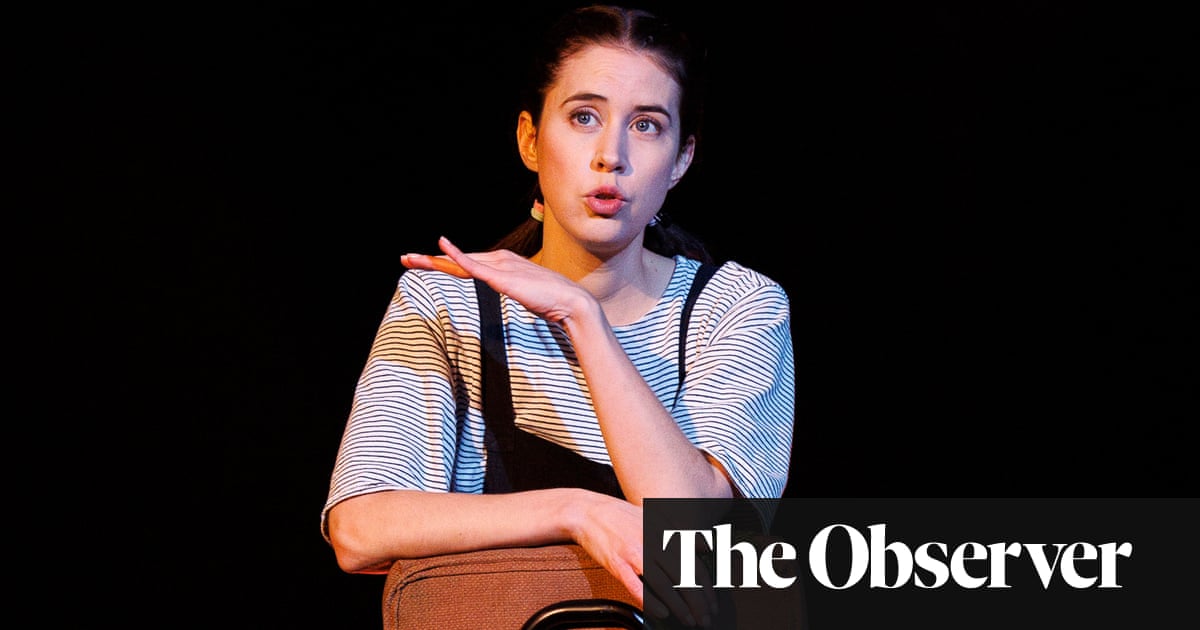
Even if you were only remotely involved in the making of Don’t Worry Darling, Olivia Wilde’s sophomore film as director whose behind-the-scenes brouhaha has dominated the past month’s show business news cycle, there was no escaping the memes and mockery. Unless you were Kate Berlant, who can be seen at the beginning of the film’s trailer wearing a cream-colored trapeze dress and balancing a cocktail on her head, and who dodged the withheld-eye-contact and spit allegations. Berlant has been too busy staging her brilliant one-woman show at the Connelly Theater in New York’s East Village.
The putatively autobiographical Kate is a dazzling hall of mirrors, a head-spinning exploration of narcissism, main character syndrome and our culture’s insatiable appetite for trauma. It’s also an undeniable celebration of Berlant’s Big Brain Energy. Before she was a cult comedian, Berlant was a graduate student at NYU, reading Lacan and Derrida and hanging out with the sorts of self-important scholars she would go on to parody in her own work, from the woman with the artistic face tattoo who calls listening to public radio “my space that I curated for myself to be well” to the performance artist who collaborates with a parrot that Berlant created for the Netflix series Characters. “She revolutionized space, and what it is to take up space,” Jemima Kirke, a fellow art world brat (Berlant’s father is the collage artist Tony Berlant), tells the camera in perfect mockumentary deadpan.
The first framing device that Kate ticket holders will encounter is a literal one: two oversize frames hang on the wall of the entryway. One contains a headshot of Kate Berlant, the actor playing “Kate”. Next to it is a framed mirror. “The audience”, the signage alerts us, is played by “YOU”.
The collective you at a Saturday matinee was a bevy of downtown scenesters who were organized (or connected) enough to score tickets to the 35-year-old’s sold-out run through 8 October, directed by Bo Burnham. Though she is not a marquee name, or even a “comic’s comic” – king of comedy Marc Maron admitted on his podcast this summer that he hadn’t been aware of Berlant until very recently – she has been everywhere all at once for quite some time, spreading her witchy, grand-dame energy hither and yon: High Maintenance, Easy, Search Party, The Good Place. She was the sleepy box-office worker in Quentin Tarantino’s Once Upon a Time in Hollywood, and a jargon-spouting bureaucrat in Sorry to Bother You.
Berlant’s greatest pieces of work are the ones that are homemade. There are the videos celebrating passive-aggression and the hollow vernacular of self-regard (eg “doing the work”, “mobilizing change”) that she writes and performs with her best friend John Early (you can watch their comedy special Would It Kill You to Laugh? on Peacock, or How Have You Been?, a masterclass on one-upmanship, set inside a fancy home goods store). Fans (or “Poog hags” as this particular segment of the population call themselves) also swarm around Poog (Goop backwards), the cult podcast on which she and fellow comedian Jacqueline Novak interrogate wellness culture and beg for free swag.
Kate marks the first time she is “holding space”, as she might put it, for an extended period of time. The production takes liberties with the genre of autobiographical shows and all its trappings: the promise of authenticity, the cult of vulnerability, the pro forma banter that gives way to a dark revelation.
The show’s conceptual backbone is simple: it’s a performance as audition, in which its star tries to break into show business. A Disney+ executive named Steve is in the audience, and she’s gonna show him that she’s got the goods! Berlant repeatedly hams for the camera to the side of the stage, which projects her face onto a 20ft screen. Framed by a mess of pre-Raphaelite curls, her face is preposterously expressive, that of a silent film star who can tell a thousand notions in as many seconds. Her skin has a flexibility that calls to mind Daffy Duck, and she can do this thing where she forces one eye shut, as if by glue, and rolls the other one at turbo speed. There’s only one problem: she can’t cry on command.
Over the course of the show’s 80 minutes, our star keeps trying to force a tear to roll down her cheek. She’s trembling, she’s pushing like a mother-to-be on the delivery table. The gambit is a perfect manifestation of her blend of sincerity and screwball. When she does finally cry (of course she does), it’s hard not to exult on her account – even though there’s not a chance in hell she isn’t playing some elaborate joke on you. This is a production full of interruptions and clarifications, subversion baked into Berlant’s every utterance. The show is an infinite yo-yo of creation and destruction. The trauma she ultimately reveals is devastating – in its own madcap way. The autobiographical details, she tells us late in the game, are completely made up. Theater, she tells us, is over!
In today’s age, sharing and self-exposure might be the forms of performance on which we place the highest premium. There’s another tribe of performance artists, though, the ones who possess the creativity to invent fictional personas, as well as the audacity to hold back and not give everything away. Kate Berlant might not be as well known as Lady Gaga and Beyoncé, but she is in their league. And dare I say it, she’s a whole lot funnier.
Kate is showing at the Connelly Theater in New York until 8 October












